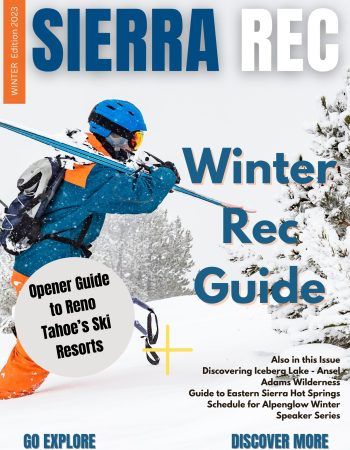Breakdown of macronutrients and how each plays a role in energy, fuel reserve and caloric burn when being active (hiking, snowboarding or skiing, etc.)
As we turn into the winter season, you’re likely already piecing together your next adventure! Whether that be snowboarding or skiing at some of the best mountains in the west coast, gearing up the kids up for a packed snow day of sledding, making snow angels or prepping yourself for endless questions like, “do you want to build a snowman?” To not only keep your sanity, but maintain your energy levels throughout an adventurous winter, you’ll want to zoom in on your nutrition & overall eating habits when it comes to these jam packed, adventurous days.
I’m Vanessa, an online Nutrition Coach and remote Personal Trainer and we’re going to dive into the nutrition you’ll need to fuel any adventure. Even though we’re in the spirit of the winter season, the strategies and tips we’ll discuss will be applicable across all activity types, seasons & even if Olaf wants to come hang out during the summer.

You already know that food is fuel and essential to you being able to function daily and live a healthy life. Though, what you may not be keen on is how your food breaks down & how proteins, fats, & carbs all play a unique role in your body, your energy levels, & your ability to sustain long days of activity. This could resulting in you winning the snowball fight with the kids. The ultimate satisfaction? We’re going to zoom in on each macronutrient and as your online nutrition coach, I’ll share some tips of what to focus on to keep you going. Grab your hot cocoa or hot toddy & let’s dive into the nutrition you’ll need to fuel your next adventure.
Protein needs based on your activity type
Protein
The best goes first. Okay, as an online Nutrition Coach & remote Personal Trainer, I may be biased, but only because I know how vital, optimal protein intake is in your nutrition and because it’s often the one macronutrient that often goes under consumed. No matter what activity you’re engaging in, consuming enough protein is not only essential to effective & cohesive performance of daily bodily functions, but also to the maintenance and growth of strong bones and muscles. One of the biggest distinctions between protein, fats & carbs, is that protein is the only macronutrient that is not stored in the body, meaning that it’s used for nearly all bodily functions. Protein is also the leading macronutrient that supports satiety (the feeling of fullness), which is key for long days on the mountain, in the car or all day exploring in the Heavenly Village.

Protein is also the main macronutrient that is responsible for building and repairing muscle. This is vital for adventure enthusiasts such as yourself when it comes to building & maintaining strength & getting progressively better at your hobby or sport. Protein needs can vary based on your type of activity & no, this doesn’t mean that if you snowboard one day and weight lift the other, that your protein needs vary day by day. Your protein needs are determined by your overall activity type, level of activity (such as number of training days per week and duration of activity) and what type of exercise you’re engaging in a majority of the time. Other important factors that impact your protein needs are your biometrics, think: height, weight, sex, and age.
The recommended daily allowance (RDA) for protein is based on scientific studies and provides a baseline need of protein intake for a general population (not accounting for us adventure enthusiasts or even people who are moderately active). The RDA for protein is .36 grams per pound of body weight (.8g/kg). Throughout numerous studies, it has become even more apparent that having a more tailored approach to your protein levels and exceeding the RDA for protein can enhance performance, development within youth and aging populations, support maintaining body composition and recomposition, such as weight gain or weight loss.
Now, without knowing your biometrics as discussed above, here is a cheat sheet you can use to determine your daily protein needs based on your activity level. Remember, this is based on the type of exercise you’re engaging in a majority of the time. You’ll notice in this daily protein intake cheat sheet there are ranges. Use the ranges as a guide based on the amount of protein you’re currently getting in and where you may need to increase. As an online Nutrition Coach & remote Personal Trainer who focus on building realistic, long term healthy & fitness habits for my clients, set yourself up for success when determining how to increase your daily protein intake.
Here’s how: For example, if you’re currently getting in 60g of protein in a day and after your calculation, you want to be consuming 100g protein per day, don’t make the big 40g jump right away. This can feel overwhelming and lead to less adherence if you’re feeling like you have to stuff your face and perhaps go over in your other macros, just to get there. Increase slowing over time, starting with an added 10-20g of protein per day by making protein enhancements to your meals & snacks, then progressing once you’ve established a new normal. Gradual increase is the way to go.
Here are general protein recommendations you can use based on your current activity level & type:
**Bottom of range, less training sessions per week, 1-3. Top of range, more training sessions per week, about 3+.
– No regular activity = .36g/lb body weight (baseline) to .55g/lb bodyweight
– Light to Moderate Cardiovascular training = .55g/lb bodyweight to .73g/lb bodyweight
– Light to Moderate Resistance training = .68g/lb bodyweight to .91g/lb bodyweight
– Moderate to Vigorous Cardiovascular training = 68g/lb bodyweight to .91g/lb bodyweight
– Moderate to Vigorous Resistance training = .77g/lb bodyweight to 1g/lb bodyweight
Math is fun: For example, a 150lb, moderate to vigorous resistance trainer who strength trains 2-4x/week, it would be recommended to consume between 115.5g – 150g of protein per day based on activity level.
Formula= .77g x bodyweight = daily protein target
If you’re interested in a more tailored macronutrient breakdown, click this link to learn more & schedule a session together!

Importance of carbohydrates for the active adventurer
Now that we’ve got your protein underwraps, let’s talk about your body’s primary fuel source–carbohydrates. Before we get into it, carbs are not public enemy #1! You probably have heard before, “eating carbs makes you gain weight.” Myth busted: this is a false claim, no single macro or micronutrient (or food for that matter) single handedly causes weight gain. Carbohydrates are the body’s primary fuel source and similar to fats, when excess is consumed, it’s stored for energy. Your carbs are your quick burst energy, that is why you likely see athletes eating heavy carb-loaded meals before a big race or game, known as “carb-loading”.
Since carbs are your body & brain’s desired food source (glucose), they are essential for your jam packed adventure days when the kids need every last ounce of your energy at every waking moment. For this reason, carbs are vital in every nutritional regime to support energy levels, healthy brain function & activity, maintain blood sugar levels, support healthy digestion and so much more.

Carbs are broken down into 2 overarching categories: starches and sugars. From there we have additional categories on how these are processed within the body, such as: simple sugars, complex starches and fiber. It’s important to consume a variety of carbohydrates throughout your adventure day and choosing the specific ones based on the time of day, may support longer sustained energy throughout the day.
For example, the earlier you’re having sugar in your day, the greater opportunity your body has to use it up throughout the day, a.k.a, burning energy. Now, I’m not saying throw back the twinkies & fun dip at 8am, but choosing your fruits and high protein breads for breakfast and lunch, will fuel you to take on those energy demanding activities during the most active part of your day. In the evening, you can target those starchy carbohydrates most commonly found in potatoes, vegetables, grains and barley such as rice and pastas.
Aim to avoid massive simple sugar (over)loads to avoid blood sugar spikes and not hitting the “crash and burn” feeling mid-day on the mountain. By this I mean, a Buddy the Elf made spaghetti breakfast may not be the balanced, fueling breakfast you’re looking for to kick off your adventure day. These are just a few examples to support you in crafting a nutritional routine that supports your body’s needs & cravings.
How to get in healthy fats to fuel your long days out in nature
Permission granted to live your best fat life! Fats are broken down into a few categories: saturated, unsaturated (mono and poly) & and trans fats. Fat is the body’s 2nd major energy source and like carbs, when fat is not used for energy, it is stored in the body. Think of your fats as your longer bouts of energy, or your reserve energy. As we discussed earlier, carbs are the body’s primary fuel source and fats are the secondary. This is going to support energy needs beyond quick bouts of energy needed to perform activity.

Let’s put it this way, you have 2 types of activities: distance running and sprinting. While your body relies on both carbs and fats for energy, your quick energy release is going to be your carbohydrates (sprinting) and support you being able to perform quickly & efficiently. This is because carbohydrates are quickly converted to energy in the body. Now fats are going to provide you with longer or extended release energy and endurance activity (distance running). When it comes to exercise and long days on the mountain, your body will prioritize carbohydrates for energy, as it normally would, but will also pull energy from fats to keep you moving longer, when carbohydrate replenishment may not be available. Your body utilizes both forms of energy and prioritizes based on the demands being placed on it.
You’ve likely heard of or maybe even tried the ever trending “Keto” diet, which is when you are forcing the body to use fats as the primary energy source vs. the normal carbohydrates, and your body enters a state of “ketosis,” hence the name. I discuss more about Keto, the impacts it has on the body as well as several other diets in my online nutrition program, BITES. To learn more about Keto & each macronutrients specific role in the body, head to this blog post on my site.
Let’s briefly discuss types of fats and healthy fat food sources for your long travel or activity days. Fats are broadly categorized between saturated, unsaturated and trans fat. These are the most commonly known categories, though there are sub-categories such as mono & polyunsaturated fats which we can briefly get into here.
Saturated Fats- These are usually solid at room temperature.
- Butters
- Coconut oils
- Cheese
- Fats on animal proteins and meats
Trans Fats- Trans fats are those ones that are more chemically processed because hydrogen has been forced into that oil- making it saturated.
- Margarine
- Shortening
- Fried foods
Ex: fried chicken, French fries, donuts, baked treats, even non-dairy creamer sometimes does have trans fat in it as well
Unsaturated Fats
Monounsaturated fats
- Olives & olive oils
- Almonds
- Cashews
- Avocados
- Nut butters
Polyunsaturated fats
- Walnuts
- Sunflower seeds
- Plant oils
- Chia seeds.
A rule of thumb you can follow is focusing on primarily unsaturated fats and limiting saturated fats to 10% of your total daily value (%DV). Choosing lean meats & dairies will support your body in dissolving key vitamins and minerals it needs as well as keep cholesterol levels in healthy ranges. Consuming more unprocessed and whole food fats will support you in having more from unsaturated fats such as raw nuts, seeds & oils.
The goal is to be able to do more with your day and ensure the food you’re consuming isn’t making you feel sluggish or feel like you need to take an afternoon nap (until the day’s over at least). So when it comes to your long days of travel and jam packed activity days, opt for mixed nuts and seeds, avocado egg toasts, turkey and cheese rolls ups, and even protein bars lower in saturated fats.
To learn more on macro & micro nutrients, how to build balanced eating habits & a nutrition routine that works best for you, check out my online nutrition program, BITES, and take the next step in building your nutrition education & achieving your goals.
Now that you know how to fuel for your long day on the mountain or what feels like an endless travel day to get there, it’s time to hit the grocery store! Make sure you plan ahead having a balanced, macronutrient packed breakfast and your non-perishable snacks in the pockets of your snow pants. Calculate your daily protein goals ahead of time and devise a plan to know how to meet those in each meal, even when you’re traveling! For more tips & food recs for your winter season, check out this post from Sierra Rec’s 2022 winter edition!
To stay connected with me, Vanessa Milsner, your online Nutrition Coach & remote Personal trainer, subscribe to my weekly newsletter, MF Weekly, where I share educational & realistic health & fitness tips, hacks, & resources to enhance your everyday routine! See you next Wednesday in MF Weekly!











